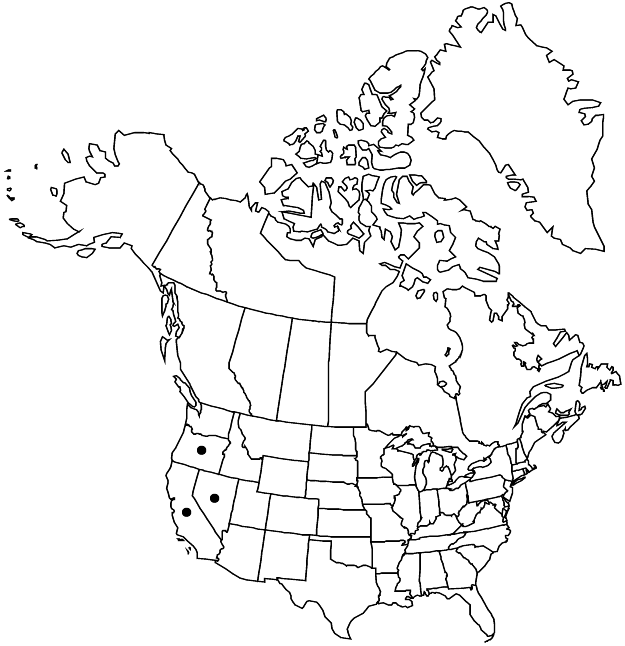Silene grayi
Proc. Amer. Acad. Arts 14: 291. 1879.
Plants perennial, with numerous, dense basal tufts of leaves; taproot stout; caudex much-branched, woody. Stems erect from sometimes decumbent base, little-branched, subscapose with 2–3 pairs of reduced leaves, 10–20(–30) cm, finely retrorse-puberulent proximally, stipitate-glandular and viscid in inflorescence. Leaves: basal petiolate, blade oblanceolate to spatulate, (1.5–)2–5(–6) cm × 2–7 mm, thick and ± fleshy, apex broadly acute, puberulent on both surfaces; cauline blades linear-oblanceolate to linear-lanceolate, 0.5–2 cm × 1–3 mm. Inflorescences open, 1–3(–5)-flowered, bracteate; bracts lanceolate, 2–7 mm, herbaceous. Pedicels erect and straight or slightly deflexed near apex, 5–20 mm, stipitate-glandular, hairs with colorless septa. Flowers: calyx prominently 10-veined, in flower broadly cylindric, 8–10 × 3–4 mm, in fruit becoming campanulate and somewhat contracted at base, 8–12 × 5–7 mm, membranous between veins, margins dentate, hairs with colorless septa, veins parallel, purplish, with pale commissures; lobes ovate, ca. 2 mm, shorter than tube, apex flushed with dark red, shortly apiculate with broad, scarious margins, glandular, puberulent; petals exserted, pink to dusky purple, clawed, claw equaling or slightly longer than calyx, limb 2-lobed, 3–5 mm, each lobe with lateral tooth, tooth usually small, rarely larger and equaling lobes, appendages 2, 0.7–1.5 mm; stamens equaling petals; stigmas 3(–4), equaling petals. Capsules slightly exceeding calyx, ovoid, opening with 6 (or 8) ascending to slightly recurved teeth; carpophore 2–3 mm. Seeds pale brown, reniform, 2–3 mm, sides with close radiating ridges, margins broadened and winglike. 2n = 48.
Phenology: Flowering summer.
Habitat: Loose talus, among boulders in mountains, chaparral, open coniferous forests
Elevation: 1000-3100 m
Distribution

Calif., Nev., Oreg.
Discussion
Silene grayi is a small montane relative of S. parryi, but it differs in having small, fleshy leaves (ca. 2–4 cm), most of which are in basal tufts. The seeds are also larger and have a thickened wing. Some plants in the mountains of Washington and Oregon appear to intergrade and need further study.
A hybrid between Silene grayi and S. greenei has been collected in the Siskiyou Mountains of northern California, an area where both species occur.
Selected References
None.